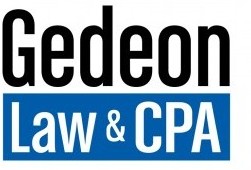Australians who are required to file a US tax return face unique complications due to outdated treaty pension provisions in the USA-Australia tax treaty. While Canadian retirement plans, for example, receive favorable treatment in the US, Australian superannuation plans are not given the same benefits under the USA-Australia tax treaty. As such, Australians can’t take advantage of tax deferred growth on their superannuation as is allowed for US retirement plans such as a 401K or IRA. Moreover, contributions to a superfund are not deductible in calculating US taxable income.
How are an Australian superannuation account treated for US tax purposes?
In general, superannuation income is not exempt income on your US return, nor is the foreign tax credits paid by the super fund available to provide relief from double taxation.
There are two ways an Australian superannuation account is usually treated for US tax purposes. It is usually treated as either an employee benefits trust or a foreign grantor trust.
The rest of this article will discuss these two forms of treatment.
Employee Benefits Trust
The majority of superannuation accounts are treated as an employee benefits trust, which requires the super investment income to be reported on Form 1040. Moreover, ownership of your account needs to be reported on Form 8938, if you meet the filing requirements.
What exactly needs to be reported on the 1040 can differ among taxpayers. Some taxpayers only need to report the contributions as taxable income, whereas for others the growth (including contributions) in the fund is taxable income on the 1040. To make matters more complex, the taxpayer will need to keep a separate ledger of their investment in the fund for US tax purposes because the contributions and growth taxed on the US return become your US cost basis in the fund. As such, at the time of distribution, this basis can be returned tax free to the taxpayer and hence is not taxable on the US return.
Foreign Grantor Trust
Like an employee benefits trust, as a grantor trust, superannuation ownership and income needs to be reported on Form 1040. By comparison, treatment of a super as a foreign grantor trust will also require the US taxpayer to report the super on Forms 3520/ 3520-A. To make matters worse, if any investments within the foreign trust are considered a Passive Foreign Investment Company (PFIC), then the foreign trust will also need to file Form 8621.
In determining whether a superannuation rises to the level of a foreign grantor trust, a taxpayer must assess the level of control held over the super. Although the IRS has not made any rulings on what constitutes control for superannuation, generally the power to make decisions around the actual investments in the fund – as is the case with a Self-Managed Superannuation Fund (SMSF) – or the ability to make contributions to the fund are usually indicative of control, which would make the fund a foreign grantor trust.
Do I Report Superannuation on the FBAR?
Generally, the answer is yes unless an exception applies. One such exemption applies when a taxpayer owns less than 50% of the assets in the foreign benefits trust. This exemption would apply when a taxpayer is a member in a large fund since it’s unlikely the member owns more than 50% of the overall fund’s assets. A super treated as a foreign grantor trust, however, does need to be reported on the FBAR.
Working temporarily in the USA for an Australian employer
Under the bilateral social security agreement between Australia and the USA, if you temporarily work in the USA for an Australian employer, your employer must continue to pay super contributions for you. Neither you nor your employer has to pay Social Security or Medicare tax as long as you remain covered in Australia by the superannuation guarantee and your employer obtains a Certificate of coverage from the Australian Tax Office.
Help Filing Your US and Australian Taxes
Gedeon Law & CPA will ensure you are fully compliant with the reporting of superannuation accounts in the USA, please contact us if you require assistance.




